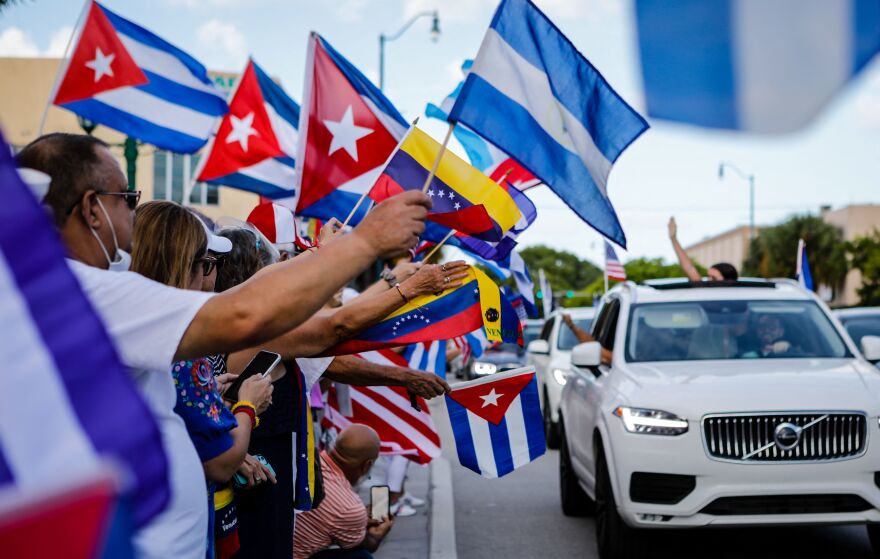NPR will be covering and celebrating Latino culture and history throughout National Hispanic Heritage Month, which begins today.
You can find continued coverage here (and be sure to check out the "El Tiny" takeover of the Tiny Desk (home) concert series, kicking off with a performance from J Balvin).
Hispanic Heritage Month started as one week and was expanded in 1988. It begins on Sept. 15 to coincide with the national independence days of Guatemala, Honduras, El Salvador, Nicaragua and Costa Rica.
The Pew Research Center has been tracking key facts and figures on U.S. Latinos for years. Here are some of the latest highlights:
Note: Pew uses the terms "Hispanic" and "Latino" interchangeably; read more about the uses and meanings of those labels here from NPR.
The U.S. Hispanic population has grown significantly in the last decade, from 50.5 million in 2010 to 62.1 million in 2020. Hispanics accounted for 51% of entire U.S. population growth during that period.
Four out of five Latinos are U.S. citizens. As of 2019, 80% of Latinos living in the U.S. are citizens. The number includes people born in the U.S. and its territories, those born abroad to American parents and immigrants who have become naturalized citizens.
The number of Latinos who identify as multiracial has also increased, from 3 million to more than 20 million. This is likely due in part to changes in the 2020 census form.
All 50 states and Washington, D.C., have seen growth in their Hispanic populations in the last decade. This is especially true for Florida, California and Texas, which saw increases of more than 1 million between 2010 and 2020. North Dakota and South Dakota have seen the fastest growth in their Hispanic populations during this time, though they are still among the smallest in the country.
Newborns are driving much of this Hispanic population growth, as immigration declined between 2010 and 2019. This is a reversal of historical trends.
The share of Latinos in the U.S. who speak English proficiently is also growing. Some 72% of Latinos ages 5 and older spoke English proficiently as of 2019. Meanwhile, the share of Latinos who speak Spanish at home has declined (but the actual number has grown).
The share of U.S. Hispanics with college experience has increased since 2010. The number of Latinos enrolled in college also increased from 2010 to 2019, from 2.9 million to 3.6 million.
People of Mexican origin made up almost 62% of the country's overall Hispanic population as of 2019. The next largest group is those of Puerto Rican origin. The fastest population growth among U.S. Latinos has come among those with origins in Venezuela, Guatemala and Honduras.
This story originally appeared on the Morning Edition live blog.
Copyright 2021 NPR. To see more, visit https://www.npr.org.




